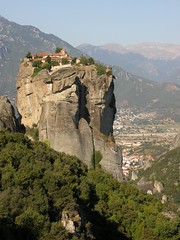 In addition to creating web apps, doing research, and pontificating on usability and social software, I like to wander around and take photos. Until now I’ve gotten along pretty well with a Nikon CoolPix 5700. It has a number of features that have turned out to be really, really useful – an 8x optical zoom that makes it easier to take photos from far away, a nice macro mode for very very close shots, and a swiveling LCD display that makes it easier to do overhead shots and candid photos.
In addition to creating web apps, doing research, and pontificating on usability and social software, I like to wander around and take photos. Until now I’ve gotten along pretty well with a Nikon CoolPix 5700. It has a number of features that have turned out to be really, really useful – an 8x optical zoom that makes it easier to take photos from far away, a nice macro mode for very very close shots, and a swiveling LCD display that makes it easier to do overhead shots and candid photos.
But, it has a few limitations that I find myself bumping into again and again. No vibration reduction, poor performance in low light, slow autofocus, and it definitely does not give you the kind of manual control that traditional SLR film cameras have. So I’m looking into getting a DSLR.
I definitely want to get a new camera before our kid is born in November. The only thing stopping me from running out and buying a DSLR is that I don’t want to turn my minor photography hobby into a major production – I like the relatively small size and light weight of my current “prosumer” camera, and the fact that I don’t need to carry 2 or more lenses around with me at all times.
So here’s my project: to find a combination of camera and lens that gives me a nice balance between control, portability, and versatility. I’m not as worried about super-high resolution (by the time you hit 5-6 megapixels, you can do pretty much anything you want with the prints), or having really professional gear. Price is also a big consideration.
My guess is that I’ll have to try to find a small, entry-level DSLR and attach a “walking around” or “vacation” lens – something with a wide range, like 18mm – 200mm. Another thing I’ll be looking into is automating geotagging – I’m a big fan of photo sharing systems like Flickr and Picasa and it would be great to have faster, more accurate place data on photos.
This definitely calls for a spreadsheet. I have a tendency to approach major decisions with the application of spreadsheets and/or databases. But before I start laying out facts and figures, any recommendations? Suggestions on brand names, specific models, etc. are all welcome. Please post in the comments below.






